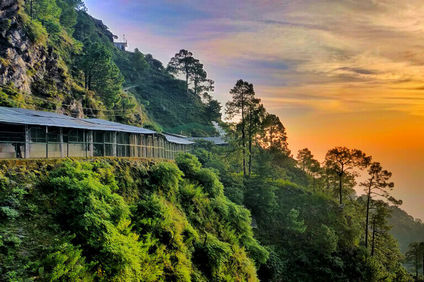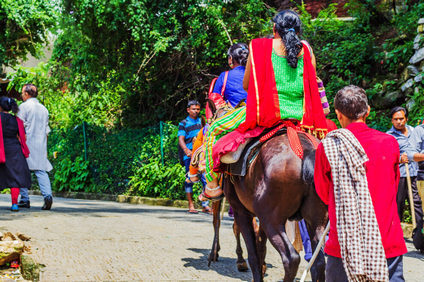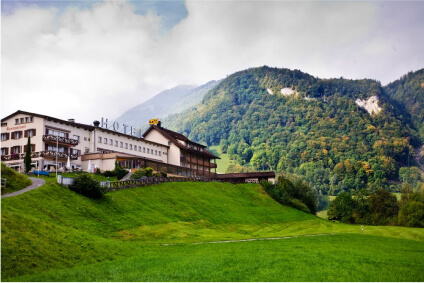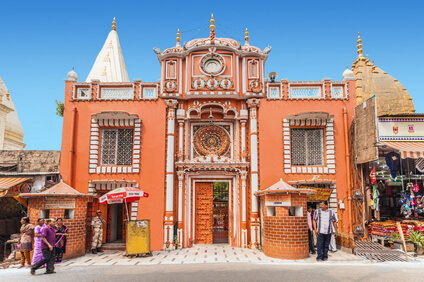A brief History of Mata Mata Vaishno Devi Temple

This mother goddess is said to reside in the Holy Cave nestled in the folds of Trikuta. It is believed that the Goddess manifested herself here in the form of three natural rock formations, known as three Holy Pindies. These Pindies symbolize energy manifestations of Goddess Shakti's three states, i.e., Maha Kali, Maha Saraswati, and Maha Lakshmi. Devi Bhagwat Puran lists this peeth among 64 Shakti peetha.
Amazingly, all the pindis are different in color and texture despite originating from the same rock. The pale white stone represents Goddess Saraswati, lying on the extreme left. In the middle lies the yellow-red gem indicating Goddess Lakshmi. The rock on the left side is black, representing Goddess Kali. Hindus have unwavering faith in their collective manifestation in the shape of Goddess Mata Vaishno Devi.
This faith prompts them to undertake an annual pilgrimage to her shrine to pay their respects, which has come to be known as Mata Vaishno Devi yatra. Owing to their passionate devotion and unflinching faith, many devotees walk bare feet and even crawl to the temple, which stands at an altitude of 1590 m. To embark upon the yatra, one has to obtain a Yatra Parchi at the Katra, the base camp for the yatra.
The trek from Katra to the temple is nearly 13 km, and the pilgrims can either walk to their destination or ride a pony. There are arrangements of palanquins for the sick and elderly and even helicopter services. The helicopters operating from Katra to Sanjhichatt are at a distance of 2.5 km away from the shrine.

An ardent devotee of Lord Vishnu, she vowed to remain celibate. Bewitched by her beauty, Bhairon Nath, a Tantrik, ran after her. During the chase, she entered a shelter and performed meditation and penances in the cave of Trikuta mountain. After nine months, Bhairon Nath arrived at Ardhkuwari cave, looking for her and threatening the Goddess.
By the end of her penance, Mata Vaishno Devi had merged into the astral form of three divine energies, viz., Mahakali, Mahalakshmi, and Mahasaraswati. She then took the form of Mahakali and beheaded Bhairon Nath. In his dying moments, he pleaded for Mata's forgiveness. A temple of Bhairon Nath stands where his severed head fell.
The holy shrine has its first reference in The Mahabharata. Upon Krishna's guidance, Arjuna meditated in the cave to please the Maa and seek her blessings for victory. Pandavas are believed to have built the temple near the five-rock structure, symbolizing the Five Pandavas.
Presently, this abode of the Goddess is said to be discovered by a man named Shridhar, an ardent follower of the Goddess. The saying goes that the Mother Goddess appeared in his dream and showed the vision of her whereabouts nestled amidst the peaks of the Trikuta mountain. Shridhar did as he asked, leading to the discovery of this sanctum sanctorum.
Though it is impossible to ascertain the exact time the cave's pilgrimage started, geological studies have established these caves to be nearly a million years old. The oldest documentation of a historical figure's visit to the holy cave is Guru Gobind Singh Ji's. Though an accurate date for the commencement of the pilgrimage is unknown, the allocation and management of this pilgrimage were done quite recently. Since 1986 Shri Mata Vaishno Devi Shrine Board has been facilitating the pilgrimage.











